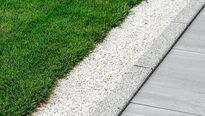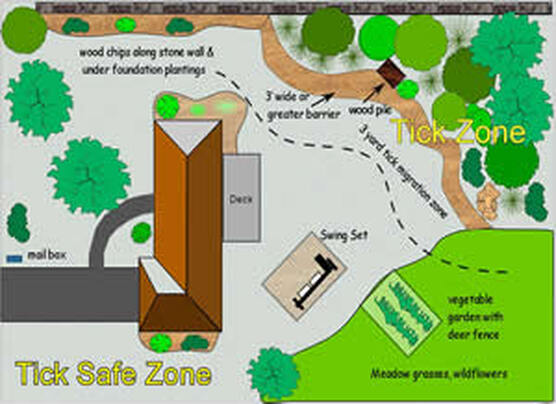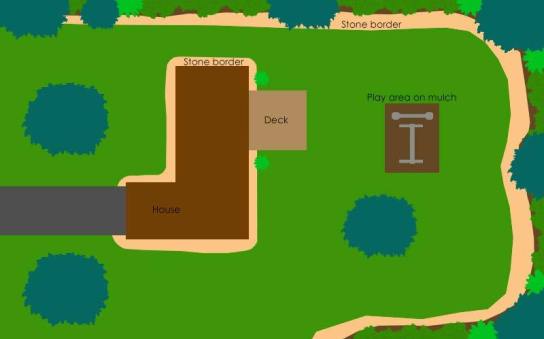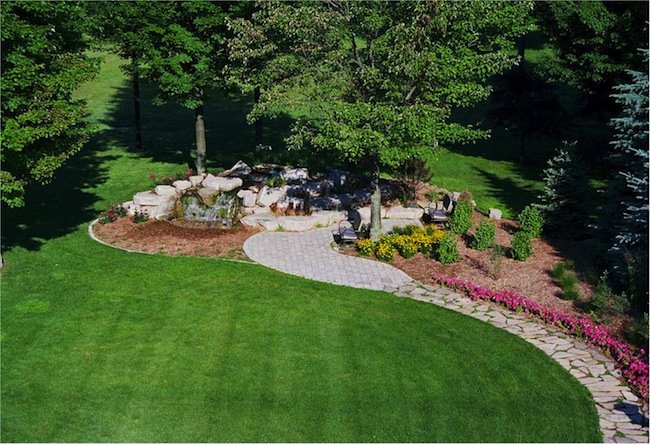|
In the U.S., mosquito bites are a normal part of summer, leaving behind an itchy bump that’s most often just a nuisance. However, mosquitoes are the most common disease vector. Others include ticks, fleas, sand flies, triatomine bugs and some freshwater snails. Vectors are living organisms that can transmit infectious diseases between humans or from animals to humans. Many of these vectors are blood-sucking insects, which ingest disease-producing microorganisms during a blood meal from an infected host (human or animal) and later inject it into a new host. (World Health Organization) The Staggering Numbers: The Centers for Disease Control and Prevention notes a 3.5-fold increase in vector-borne diseases in the U.S. from 2004-2016, with more than 76 percent of cases caused by tick-borne pathogens. Most of those cases are Lyme disease. The state with the highest number of Lyme disease cases in the U.S since 2000 is Pennsylvania. Why so many incidents? The consensus among researchers indicates that the increase in the tick population is due to:
Is there a single solution? No. And that’s the tough reality. Landscape modifications can create an environment unattractive to primary tick hosts, such as deer and rodents, which may decrease the abundance of ticks that are present in parts of the yard. Fewer ticks have been found on well-maintained lawns. But ticks will always gravitate to woodlands, stone walls, heavy groundcover and ornamental vegetation. If your home garden contains plants which deer favor, or if your yard contains invasive, understory vegetation, ticks are more likely to be found. Landscape management alone may not reduce disease incidence, as the undetected bite of only one infected tick is required for transmission of B. burgdorferi type Lyme disease. This blog provides ideas on how to incorporate tick management into the landscape. So what does this mean for the home gardener? There are landscape design tactics to keep your family, friends and pets safe. Knowing just a little about tick behavior will assist in understanding what solutions will work to minimize your family’s and pet’s exposure. Tick Behavior & Risk of Exposure Most (about 98%) Lyme disease cases are associated with the nymphal blacklegged tick, of which 10-36% may be infected with Lyme disease. Nymphal blacklegged ticks are about the size of a pinhead, difficult to spot, and are active during the late spring and summer months when human outdoor activity is greatest. About 75% of Lyme disease cases are associated with activities (hiking, fishing, horseback riding, farming, play, yard or garden work) around the home. Ticks do not jump, fly or drop from trees, but grasp passing hosts from the leaf litter, tips of grass, etc. Most ticks are probably picked up on the lower legs and then crawl up the body seeking a place to feed. Adult ticks will, however, seek a host (i.e., deer) in the shrub layer several feet above the ground, about or above the height of children. A Special Note: Tick exposure to children Until a human vaccine for Lyme disease becomes available, people need to proactively avoid tick bites; regularly check for them after exposure in high-risk zones; and remove ticks properly and expediently. While ticks are unlikely to be encountered in open fields, children chasing balls off the field or cutting through woods to school may be entering a high-risk tick area. Ticks can “hitch a ride” on your family pet. Once a black-legged tick bites your cat or dog, it will become engorged and may eventually drop off your pet. The air in your home is generally too dry for it to survive. But, it is just as likely for ticks to fall off of your pet once indoors, and reattach to either pets or people. A veterinarian can suggest methods to protect your pets from a range of vector borne diseases. Landscape management Residential landscapes are designed for a variety of aesthetic or environmental reasons and “tickscape” practices should be integrated where Lyme disease is prevalent. In most cases, alterations will be made to an existing landscape, although landscape architects and designers should also incorporate tick- safe landscaping concepts into major renovations or new construction. Follow these simple landscaping techniques to reduce blacklegged tick population Discourage unwelcome animals
Eliminate their environment—Keep it bright and sunny: Woodland edge and leaf litter are high risk areas for nymphal ticks. Altering the landscape to increase sunlight and lower humidity may render an area less hospitable to ticks. Open up your property to direct solar exposure. Management of the habitat should focus on the areas frequently used by the family, not necessarily the entire property. To reduce ticks adjacent to homes:
Strategically place your ‘garden rooms’ or areas used by family and pets
Selectively choose plants and their placement
 Use Mulch and Hardscape as a barrier: The use of hardscapes, mulches, and xeriscape landscaping techniques can help reduce tick habitat and isolate parts of the yard from tick hot spots. Hardscapes refer to non-living features of the landscape like patios, decks, and paths. Mulches are used to suppress weeds and help retain soil moisture, but also can help reduce tick movement. In the laboratory, landscape materials have been shown to deter tick movement and around homes. A three-foot wide or broader woodchip barrier may help reduce tick abundance on the lawn, although results vary widely from home to home and from year to year depending upon other factors (i.e. density of woods, amount of shade, initial tick densities.) Mulches can help reduce the number of ticks on the lawn and delineate the tick zone. Quality of the landscape material may also influence results as wood chips from chipped trees, especially if it contains leaves, quickly degrade and may soon become no different than leaf litter. The application of a barrier or buffer will be easiest where there is a sharp delineation between the woods and lawn. A pesticide application can be focused on the landscape barrier or buffer zone to increase the effectiveness of the barrier. Move swing sets and sandboxes away from the woodland edges and place on a covering of smooth bark, mulch or other suitable material. Xeriscaping Xeriscaping is the application of water-conserving landscape practices. This approach reduces habitat cover; helps isolate frequently used areas, can provide an attractive focal area in the yard or garden, and reduce maintenance and water, fertilizer, and chemical use. Many drought-resistant plants are also deer-resistant. Landscapes can incorporate formal or informal designs around play, eating, or pool areas. Landscape materials such as laid brick, wood decking, stone paving, raked gravel or pea gravel (set down slightly from bordering bricks, stone, or paved areas), and concrete (exposed aggregate can provide varying attractive colors and textures and edged with brick or tile) can be used to create a patio and paths. Some plantings can be in raised beds or containers.
Colonial style gardens are formal layouts of herbs, vegetables, and flowers surrounded by fieldstone, gravel or lawn walks. The sunny, warmer landscape, separated from woodland habitat, should harbor few ticks. Native wildflower and grass meadows require no fertilizer, little or no supplemental water (once established), and only annual mowing. A small wildflower meadow is very attractive to butterflies. While data are limited, meadows appear to harbor few blacklegged ticks except along narrow edges with woodlands, dense vegetation and stone walls. Native grasses, which usually grow in small clumps, provide cover for meadow birds and certain butterflies (particularly skippers) and are deer-resistant. Final Thoughts Keep Biodiversity. Elimination of woodland and all wildlife habitats is not necessary or environmentally desirable. In cases where environmentally acceptable, consider alternatives to large tract of open lawn or only small lawn areas: butterfly gardens, vegetable gardens, formal herb gardens, colonial style gardens, wildflower meadows and hardscapes. Some evidence suggests a lack of biodiversity and a landscape that specifically favors deer and mice increases tick abundance and transmission of Lyme’s disease. The key factor appears to be the presence and abundance of deer. The objective of a tick management program is to discourage activity of several key tick hosts, and create a barrier between woodland habitat and areas the family uses most frequently. By implementing precautions against exposure to ticks, you can maximize your safety. Remember:
For more detailed tick information:
Tickscaping: download the PDF from the Connecticut Agricultural Experiment Station. Lyme disease symptoms visit your doctor and read the information on the CDC website. In PA contact the PA Tick Research Lab for a free tick test.
0 Comments
Your comment will be posted after it is approved.
Leave a Reply. |
Thank you for finding us! Holly and I have collaborated to bring you informative, fun, and seasonal garden inspiration blogs.
Subscribe to receive our blogs on the 1st and 15th of the month--Gwen Follow my landscape & garden design Pinterest Page to see more pics, inspiration and Gwen's home garden journey!
AuthorsGwen Wisniewski: Landscape and Garden Designer. Contact me. Let me help you integrate these garden inspirations. Choose the links below to find out more about my landscape design service or to make an appointment. |





 RSS Feed
RSS Feed